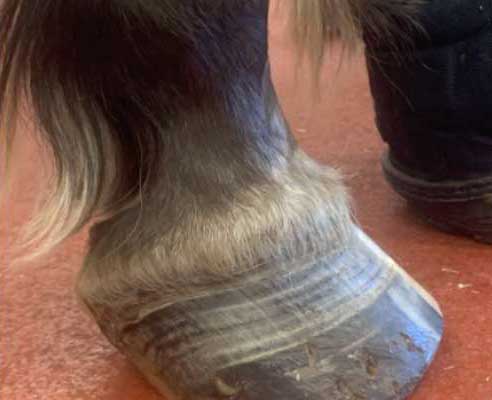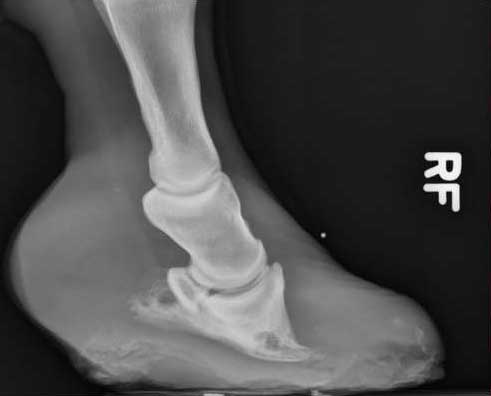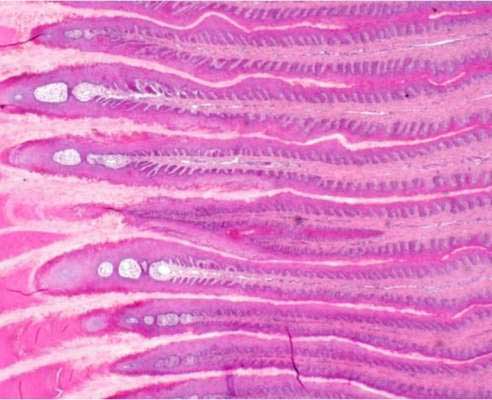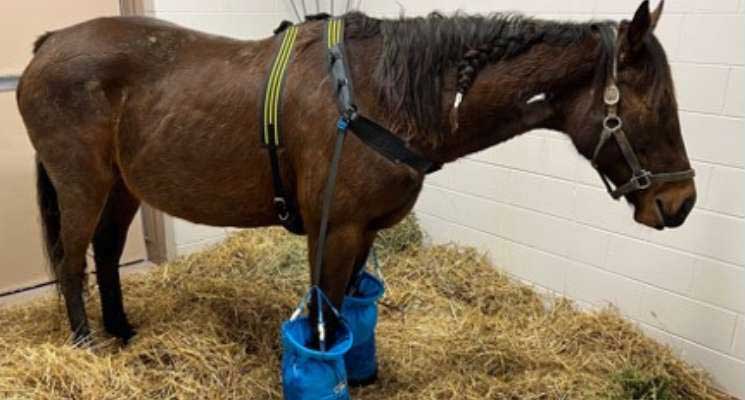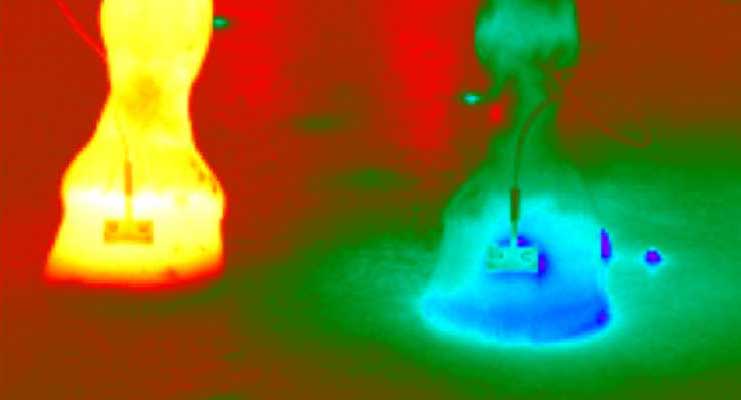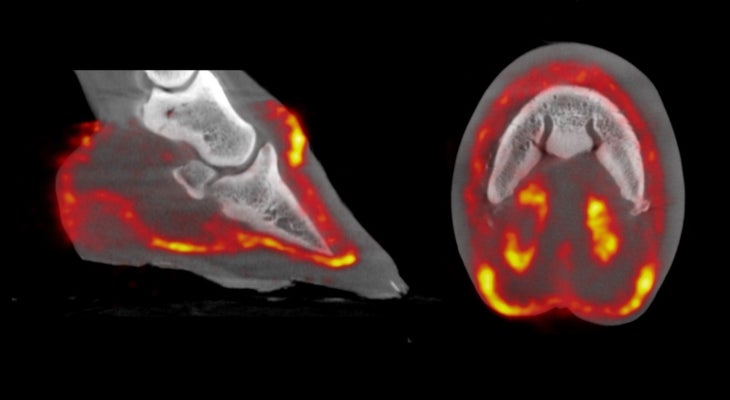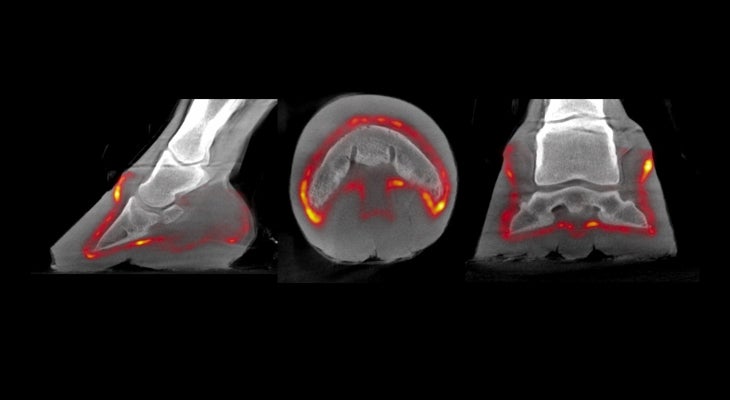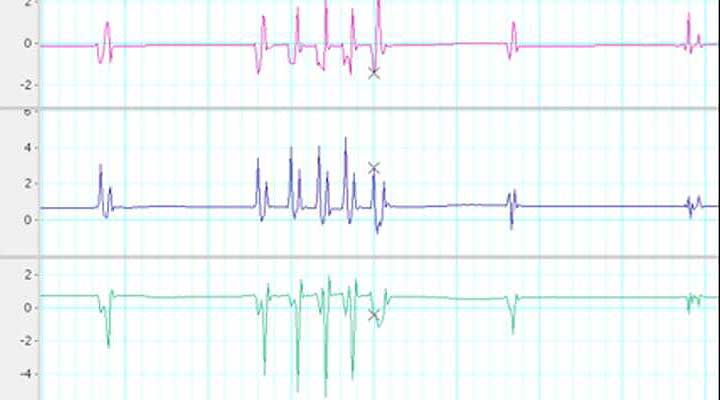Our Research
Laminitis occurs as a consequence of different primary problems in the horse and can be divided into three main categories based on cause.
1. Endocrinopathic (hyperinsulinemia-associated) laminitis
Excess insulin in the blood directly affects the lamellae of the horse foot, disturbing lamellar epidermal cell cytoskeletal structure, adhesion dynamics and death/proliferation rates in this normally quiescent tissue.
Our research in this area focuses on:
- The pathophysiology, diagnosis and management of insulin dysregulation in horses
- The mechanisms of action of insulin on the lamellae
2. Sepsis-related laminitis
Diseases such as colitis, pneumonia, metritis can lead to acute laminitis, particularly when there is a component of endotoxemia.
Our research in this area focuses on:
- The pathophysiology, which has many similarities to end organ dysfunction in human sepsis including acute lung injury
- Prevention and early treatment using therapeutic regional hypothermia (cryotherapy)
3. Supporting-limb laminitis
Laminitis is a common and devastating complication of painful limb conditions like fractures that alter weight bearing patterns. In these cases it primarily affects the opposite (supporting) limb rather than the primarily injured limb.
Our research in this area focuses on:
- Establishing the pathophysiology through in vivo and archived tissue studies
- Early identification of risk using sensor based limb motion analysis
- Developing means of prevention through augmented limb load cycling and perfusion in horses with painful limb injuries
Resources for clinicians and researchers
- We offer researchers a range of endocrine assays including insulin, ACTH, adiponectin, and incretins.
- Download our Guidelines for lamellar tissue harvest and processing (PDF).
- Laminitis discovery database — we have an extensive database and repository of tissue and blood samples that can be utilized for collaborative research, please contact: Andrew van Eps, BVSc, PhD, DACVIM.
Publications
Evaluation of an Automated Fluorescence Enzyme Immunoassay for Quantification of Equine Insulin and Comparison to Five Other Immunoassays. Nolen-Walston RD, Kulp JC, Stefanovski D, van Eps AW. J Vet Intern Med. 2025 Mar-Apr;39(2):e70038. doi: 10.1111/jvim.70038. PMID: 40048611 Free PMC article.
Lamellar cell death and proliferation are associated with restricted ambulation and preferential weight bearing in a model relevant to supporting-limb laminitis. Engiles JB, Stefanovski D, van Eps A. Am J Vet Res. 2025 Feb 19;86(4):ajvr.24.09.0268. doi: 10.2460/ajvr.24.09.0268. Print 2025 Apr 1. PMID: 39970530 Free article.
Dexamethasone administration transiently increases insulin response to an oral carbohydrate challenge in horses. Bertin FR, van Eps AW, de Tonnerre DJ, Kulp JC, Stefanovski D.Am J Vet Res. 2025 Feb 12;86(4):ajvr.24.12.0373. doi: 10.2460/ajvr.24.12.0373. Print 2025 Apr 1. PMID: 39938204 Free article.
Distal limb immersion in ice and water is the most effective means of cooling the equine hoof lamellae under clinically relevant conditions. Ciamillo S, Stefanovski D, Kulp J, van Eps A.Am J Vet Res. 2025 Jan 21;86(3):ajvr.24.10.0291. doi: 10.2460/ajvr.24.10.0291. Print 2025 Mar 1. PMID: 39842089 Free article.
Evaluation of digital radiographic measurements for the diagnosis of acute laminitis. Skelton G, Acutt E, Stefanovski D, van Eps A. Equine Vet J. 2024 Nov 20. doi: 10.1111/evj.14436. Online ahead of print. PMID: 395682992CiteShare

